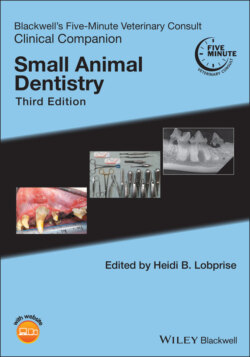Читать книгу Blackwell's Five-Minute Veterinary Consult Clinical Companion - Группа авторов - Страница 17
Chapter 3 Intraoral Radiology and Advanced Imaging INDICATIONS
ОглавлениеIntraoral radiology is an integral part of veterinary dentistry, from diagnostics to therapy to evaluation of response to therapy.
Necessary: full mouth radiographs on every patient, each dental visit.
Survey: assess normal anatomy, use as baseline.
Tooth abnormalities: size, structure, variation in number (absence or multiple).
Periodontal disease: assess extent and nature of periodontal bone loss. It is critical to assess prior to treatment to recognize potential for iatrogenic fracture before tooth exfoliation.
Endodontic disease: assess pulpal vitality (canal width and any periapical bone loss).
Acquired diseases (caries, resorptive lesions). Feline root resorption and neck lesions are often undetected until late in the disease when radiographs have not been taken.
Trauma: evaluate extent of osseous and dental damage.
Neoplasia: evaluate extent of osseous involvement.
Post procedure: document complete extraction for medical record.One study [1] has shown that 86% of extracted dog and cat carnassials with expected complete extraction left behind retained roots, sources of infection and pain. Use post‐extraction radiographs to confirm the entire tooth has been removed.Showing radiographs and images to clients improves patient care and acceptance of treatment plans [2].
